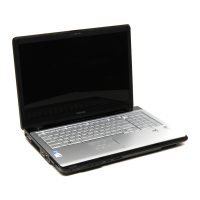
Do you have a question about the Toshiba Satellite P200 Series and is the answer not in the manual?
| Processor | Intel Core 2 Duo |
|---|---|
| RAM | Up to 4GB DDR2 |
| Operating System | Windows Vista |
| Optical Drive | DVD SuperMulti drive |
| Chipset | Intel PM965 Express Chipset |
| Wireless | Intel PRO/Wireless 3945ABG |
| LAN | 10/100 Ethernet LAN |
| Ports | 4 x USB 2.0, 1 x VGA, 1 x S-Video, 1 x Headphone, 1 x Microphone, 1 x RJ-45, 1 x ExpressCard slot |
| Battery | Lithium-ion battery |
| Hard Drive | 120GB to 320GB HDD |
Provides information on FCC compliance for Class B digital devices and interference guidelines.
Details FCC requirements for internal modems, including registration and Ringer Equivalence Number (REN).
Describes interoperability with IEEE 802.11 standards and Wi-Fi® certification.
Information on radio approvals for wireless devices based on country/region.
Details interoperability standards for Bluetooth wireless technology.
Provides safety instructions for using the laser system in optical drives.
Defines safety icons used in the manual to highlight potential hazards.
Instructions for setting up the operating system and software during the first computer startup.
Details how to connect the computer to a power source using the AC adaptor.
Instructions on how to charge the main battery using the AC adaptor.
Guides on initial steps like opening the display panel and turning on the computer.
Explains when and how to add optional memory modules to increase computer performance.
Provides step-by-step instructions for installing a memory module.
Details the steps required to safely remove a memory module from the computer.
Explains the purpose of HDD recovery and the recommendation to create recovery media.
Guides on how to create recovery media using the Recovery Disc Creator utility.
Lists the various hard disk drive recovery options available to the user.
Details how to recover the system using the built-in recovery partition.
Provides instructions for recovering the system to its original factory default state.
Explains how to use the Recovery Wizard to delete all data and partitions from the hard disk.
Covers recovering the C: partition with or without changing its size.
Guides on how to rebuild the system using recovery utilities burned to CDs or DVDs.
Explains how to use the TouchPad for cursor movement and interaction.
Explains the Dual Mode feature allowing switching between Cursor and Button modes.
Describes connecting external monitors, projectors, or TVs via video ports.
Guides on connecting a printer, including software installation requirements.
Advises on safely turning off the computer to avoid data loss.
Details the Hibernation mode feature, its benefits, and factors to consider.
Describes the Sleep mode feature for power saving and resuming work.
Provides steps to completely shut down the computer.
Guides on enabling and configuring Hibernation mode options.
Guides on using and configuring the Sleep mode feature.
Introduces the computer's keyboard, including character, control, and function keys.
Emphasizes the importance of saving work frequently to prevent data loss.
Provides instructions on how to save files using the Save and Save As dialogs.
Guides on printing documents after ensuring the printer is set up.
Recommends backing up files to various media to protect against data loss.
Introduces the optical drive and its capabilities for media playback.
Guides on how to play an audio CD using Windows Media Player.
Explains the use of the removable Lithium-Ion battery for portable power.
Explains preset power management configurations for optimal performance and stability.
Provides guidance on charging the computer's batteries.
Detailed steps for charging the main battery while it is in the computer.
Explains the main battery light indicators for charging status and battery level.
Guides on checking the remaining battery power percentage via the notification area icon.
Provides steps to take when the main battery power is low.
Explains how to set notifications for low battery power and actions like Sleep/Hibernation.
Offers ways to conserve power and extend battery operating time.
Guides on choosing predefined or creating custom power plans.
Guides on how to properly insert a charged battery into the computer.
Offers tips on battery care to prolong its lifespan.
Lists essential safety precautions when handling and using the battery pack.
Lists requirements for connecting to the Internet or other computers.
Provides instructions for connecting the computer's modem to a standard telephone line.
Explains how to connect to networks via Ethernet or Wi-Fi®.
Discusses requirements and setup for wireless LAN connectivity.
Steps required to establish an Internet connection.
Provides quick access to computer functions and customization settings.
Guides on reinstalling drivers and applications bundled with the computer.
Explains setting passwords to protect files and the computer.
Guides on setting a supervisor password to prevent unauthorized configuration changes.
Step-by-step instructions for setting a supervisor password.
Explains using a user password for power-on protection.
Guides on setting a user password for power-on protection.
Guides on using the utility to diagnose problems with computer devices.
Introduces the configuration management tool for BIOS and system settings.
Allows selection of applications to work with zoom in/out hot keys.
Enables fingerprint-based authentication for user logon and password replacement.
Guides on enrolling new fingerprints or updating existing samples.
Prevents unauthorized access by requiring fingerprint authentication when the computer is off.
Describes how to enable or disable power-on security features.
Offers tips for maintaining the fingerprint reader to ensure proper function.
Introduces ConfigFree utilities for controlling communication devices and networks.
Covers common problems that are relatively easy to identify and solve.
Addresses issues that may occur when powering on the computer.
Troubleshooting steps for when the computer fails to power on.
Guides on detecting and fixing problems with the Windows operating system.
Explains how to use Startup menu options to troubleshoot OS issues.
Addresses common internet issues like slow connections and browser errors.
Guides on troubleshooting and resolving hardware conflicts using Windows Help.
Explains how to use Device Manager to check and change device configurations.
Guides on troubleshooting memory module issues by reinstalling or replacing them.
Addresses common problems related to AC power, battery charging, and battery life.
Troubleshooting steps for keyboard issues like unresponsiveness or error messages.
Covers issues like inability to access disks or missing files.
Provides general troubleshooting tips for wireless (Wi-Fi®) networking issues.
Stresses the importance of saving work regularly to prevent loss.
Explains Windows features for backing up settings and important files.
Provides steps for backing up computer data or the entire system to CDs, DVDs, or hard drives.
Activates instant security by blanking the display and requiring logon.
Displays power plans and cycles through them using a hot key or card.
Places the computer into Sleep mode using a hot key or card.
Places the computer into Hibernation mode using a hot key or card.
Enables or disables optional wireless devices like Wi-Fi® and Bluetooth®.
Enables or disables the TouchPad or Dual Mode Pad using a hot key or card.
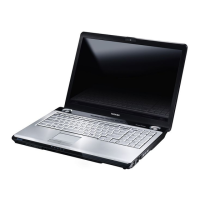


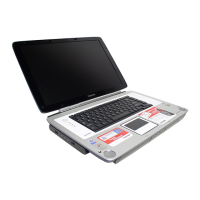



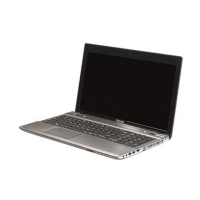


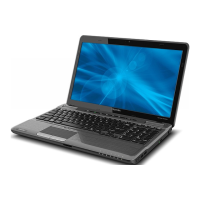
